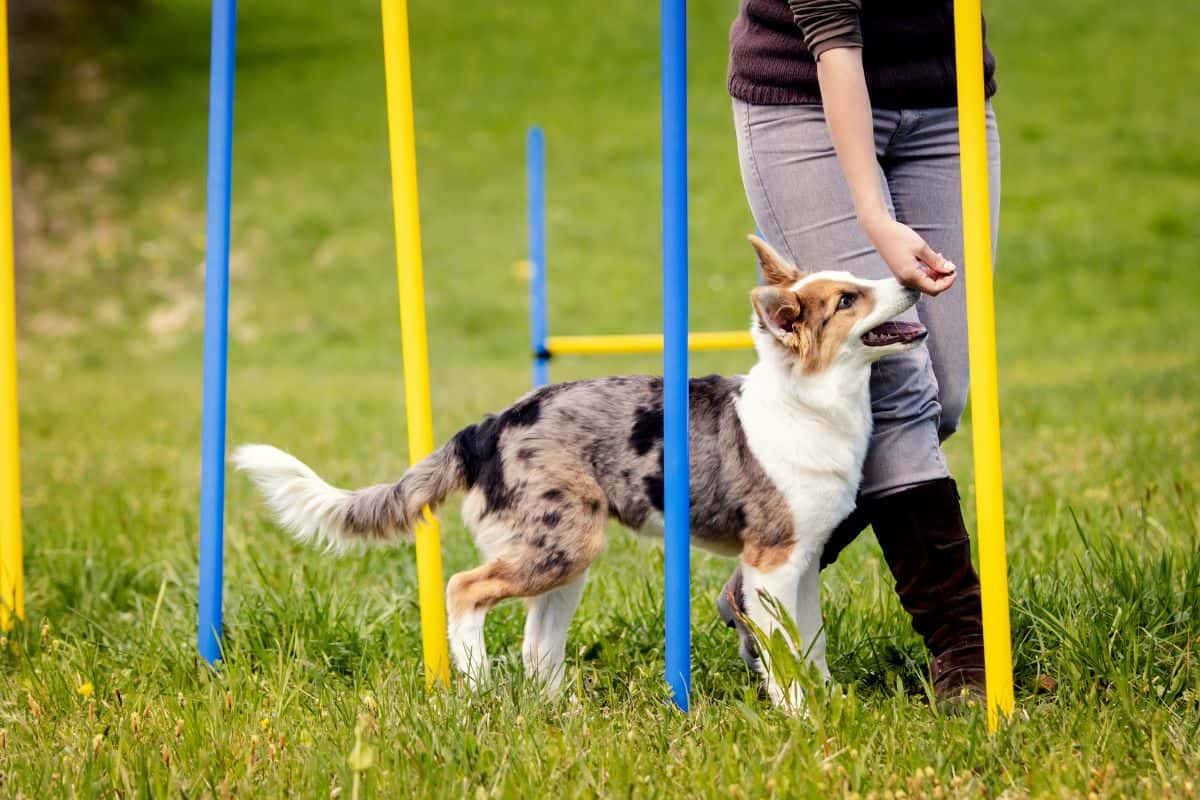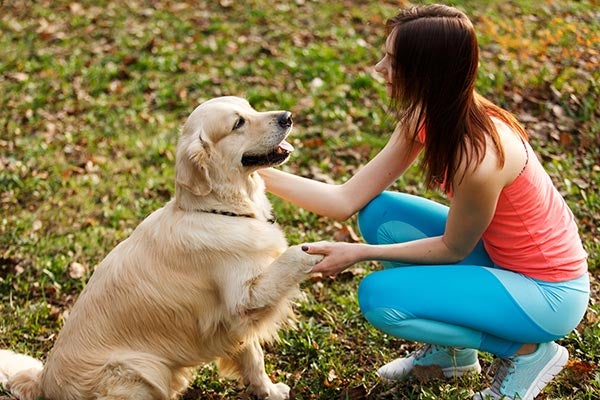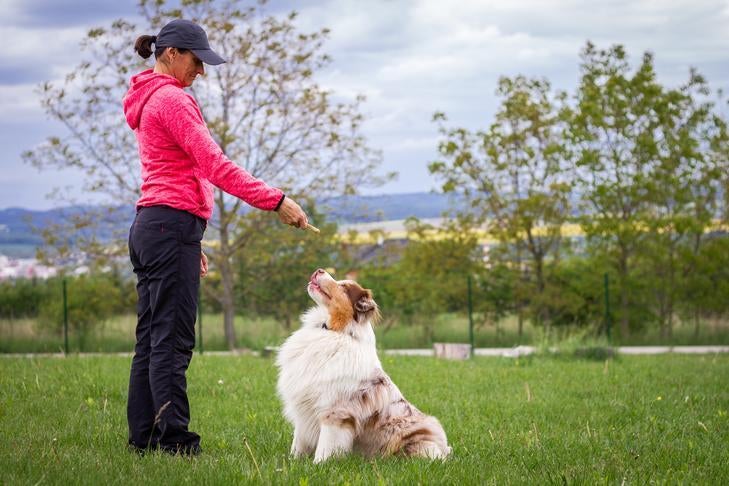Just How to Include Games right into Your Dog Training Routine
Just How to Include Games right into Your Dog Training Routine
Blog Article
Important Tips for Successful Dog Training: A Guide for Pet Owners
Effective dog training is a complex process that requires a critical method customized to both the family pet's temperament and the proprietor's objectives. Comprehending how to browse these obstacles can dramatically improve the training experience, ultimately changing the relationship between proprietor and canine.
Recognizing Dog Actions
Comprehending pet behavior is crucial for efficient training and fostering an unified partnership between pooches and their owners. Pet dogs communicate mostly via body language, articulations, and actions, making it vital for proprietors to interpret these signals properly. Recognizing a pet's posture, tail position, and ear positioning can give insights into its emotion. As an example, a wagging tail does not always indicate joy; it can additionally signal excitement or anxiety.

Socializing plays a substantial duty in pet dog habits; exposure to various settings, individuals, and various other animals can considerably impact a dog's personality. Factors such as type attributes and private temperament must assist training techniques, as some types may have details behavioral qualities that necessitate customized methods. By understanding these elements, proprietors can produce an encouraging atmosphere that urges positive actions, causing successful training results and a much deeper bond with their animals.
Developing Constant Commands
Reliable communication with your pet dog begins with establishing consistent commands. This foundational component of training is vital for promoting understanding in between you and your pet. Uniformity in the commands you make use of guarantees that your pet can reliably connect details words or phrases with the preferred actions.
When selecting commands, select clear, distinctive words that are easy to state and differentiate from each other. Avoid utilizing similar-sounding commands that might confuse your canine. Using "sit" and "remain" is appropriate, but "sit" and "hit" might lead to misconceptions.
In addition, keep the same tone and volume for every command. Canines are delicate to vocal hints, so differing your tone can create complication.
It is equally vital to make sure that all relative are on the same web page relating to the commands utilized. A united front in command usage will certainly stop mixed signals and enhance the understanding process.
Favorable Support Techniques
The power of favorable reinforcement in dog training depends on its capability to urge preferred behaviors via benefits and appreciation. This method is based in the concept that habits followed by desirable results are more probable to be duplicated. By including positive support into your training program, you can effectively form your dog's habits in a constructive way.
To implement positive support, it's vital to recognize what inspires your pet, whether it be treats, toys, or spoken praise. When your pet dog executes a preferred activity, such as resting on command, right away compensate them with a treat or love. This organization between the command and the positive end result strengthens their understanding.
It's important to timing the incentives correctly; providing the support within secs of the desired habits aids your dog make the connection (dog training). In addition, uniformity is vital-- ensure that all relative make use of the same commands and incentive systems to stay clear of confusion

Progressively, you can reduce the frequency of deals with as your pet finds out the behavior, transitioning to praise or periodic benefits. This technique not just cultivates a solid bond in between you and your pet but also promotes a positive knowing atmosphere, making training a satisfying experience for both.
Socialization and Communication
Continually exposing your pet to a variety of atmospheres, people, and various other animals is essential for their social advancement. Socializing ought to begin early, ideally during the crucial window of 3 to 14 weeks, when puppies are most receptive to brand-new experiences. Older canines can also profit from recurring socializing efforts.
Introduce your dog to various setups, such as parks, pet-friendly stores, and urban locations. This direct exposure assists them adjust to different stimuli, reducing anxiousness and anxiety actions. Motivate positive communications with other dogs and individuals, making certain that these encounters are safe and regulated to cultivate confidence.
Use structured playdates with well-mannered pet dogs, as this can improve your pet's social skills and instruct them ideal habits. Obedience courses and training sessions additionally offer excellent chances for socialization, enabling your pet to communicate with others in a monitored environment.
Screen your dog's body language throughout interactions, as this will aid you evaluate their convenience degree. Gradually boost exposure to more difficult situations while making sure that each experience is favorable. A well-socialized canine is a lot more most likely to exhibit balanced actions, making them a delight to have in any type of setup.
Resolving Common Training Difficulties
Every pet proprietor will experience training obstacles at some factor, regardless of their canine's age or socializing degree. Recognizing common issues such as stubbornness, diversions, and terror can aid in developing effective techniques for enhancement.

Gradually present disturbances as the pet dog more tips here ends up being much more skilled in commands. Short, constant training sessions are likewise effective in maintaining focus.
Terror can hinder a dog's understanding procedure. Progressive desensitization to the source of anxiety, coupled with positive reinforcement, can aid ease stress and anxiety. Patience is crucial; never ever require a dog right into a circumstance that causes distress, as this might worsen the problem.
Inevitably, understanding and attending to these common obstacles with a structured strategy will foster a much more productive training experience, reinforcing the look at these guys bond between pet and owner while advertising effective understanding.
Final Thought
In recap, successful pet training counts on a thorough understanding of canine habits, the facility of consistent commands, and the application of favorable reinforcement methods. Socializing plays an important duty in establishing well-adjusted pet dogs, while dealing with usual training challenges needs perseverance and adaptability. By carrying out these essential methods, pet dog owners can promote a solid bond with their dogs and promote preferable actions, ultimately resulting in an unified partnership between people and their canine friends.
Understanding canine habits is crucial for effective training and fostering a harmonious connection in between pooches and their owners.Socializing plays a significant role in dog behavior; direct exposure to different settings, individuals, and various other pets can considerably affect a pet dog's personality.The power of Recommended Reading favorable support in pet training exists in its capacity to motivate desired behaviors through rewards and praise. By incorporating positive reinforcement into your training regimen, you can efficiently shape your canine's behavior in a constructive manner.
In summary, effective pet training counts on a thorough understanding of canine habits, the facility of constant commands, and the application of positive reinforcement strategies.
Report this page